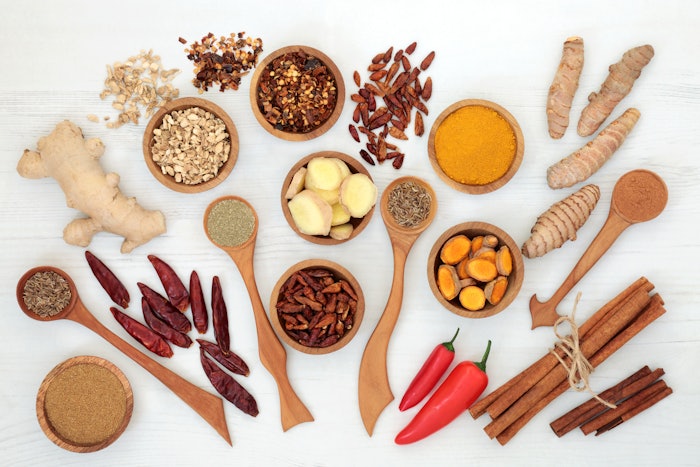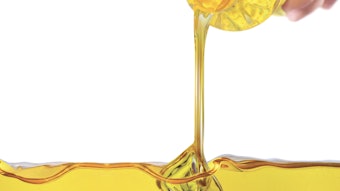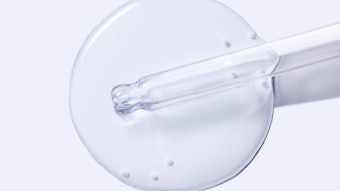
In today’s fast-paced world, stress is more common than rain on a cloudy day, pouring down on us relentlessly and wreaking havoc not only on our minds but also on our skin. As estheticians, we know that stress can show up as breakouts, dullness, inflammation and premature aging - issues becoming more common as stress becomes more of an issue with our clients.
How Stress Affects Skin
When stress levels spike—and even if it’s always present at a slow simmer—the body redirects blood flow to essential organs, leaving skin out in the cold. Add in a surge of adrenaline and cortisol, and you’ve got a recipe for collagen breakdown, reduced circulation, heightened inflammation and shortened lifetimes of cells throughout the skin.
The results? Skin may show signs of distress with increased redness, dry patches, fine lines and breakouts. To make matters worse, diminished circulation means skin receives less oxygen, vital nutrients, and antioxidants while waste builds up in cells and tissues, causing dullness, yellowing and hyperpigmentation.
The good news? By incorporating adaptogens into your treatments and skin care routines, you can help your clients counteract these effects. These powerful plant-based ingredients work to balance stress responses, boost circulation, and support skin’s overall health, giving your clients’ complexions the care they desperately need.
What Are Adaptogens?
Adaptogens are natural substances—primarily herbs, mushrooms, and roots—used in traditional Ayurvedic and Chinese medicine for over 3,000 years. Each adaptogen is recognized for its ability to help the body rebalance biologic functions and restore overall well-being by regulating biological pathways, including anti-inflammatory responses, antioxidant activity, and enhancing cellular repair.
When applied to the skin, adaptogens act as "stress whisperers," counteracting the damaging effects of free radicals within cells and on the skin, neutralizing environmental toxins, repairing skin’s barrier, improving hydration, and countering inflammation, especially in aging skin and eczema, acne, and rosacea.
At a cellular level, adaptogens address the skin's response to stress by modulating the effects of heightened hormone levels like cortisol and adrenaline, both of which can break down collagen, trigger inflammation, and set-up conditions that lead to such diverse issues as sagging skin and clogged pores. These wide-ranging actions make adaptogens ideal for calming angry skin, reinforcing skin’s barrier, boosting hydration in uncomfortably tight complexions, reviving firmness and smoothing out fine lines and deeper wrinkles.
Top Adaptogens for Skin Health
Not all adaptogens are created equal when it comes to skin care. Here are eight of the most effective adaptogens to incorporate into your treatments or product recommendations:
1. Ashwagandha (Withania somnifera)
The king of adaptogens, this evergreen shrub has a wealth of antioxidant and antibacterial benefits due to its abundance of withanolides (steroidal compounds) and alkaloids, both of which combat oxidative stress, modulate the immune system and reduce inflammation. Ashwagandha boosts hyaluronidase inhibition (the enzyme that destroys hyaluronic acid in the dermis), while indirectly supporting hydration, elasticity and 'plumping' out wrinkles. With its remarkable antioxidant profile, ashwagandha works on a cellular level to correct UV damage, giving skin a youthful, healthy glow. As a result, it’s often used to treat dark spots, scarring, fine lines, and blemishes and is especially beneficial for those who suffer from skin infections or acne.
2. Golden Root (Rhodiola rosea)
The skin brightening revitalizer Rhodiola rosea is an herb whose roots possess active compounds such as salidroside and rosavins. These compounds have been shown to inhibit neurogenic inflammation, which occurs when nerve endings are activated, leading to the release of neuropeptides like Substance P, CGRP, and Endothelin 3. These neuropeptides contribute to symptoms such as redness, swelling, heat, tenderness, and pain. Additionally, rhodiola has been found to reduce cell senescence and promote cellular regeneration by influencing sirtuin pathways to enhance cell longevity. Key benefits include reducing visible signs of aging, slowing cellular aging, alleviating inflammation and irritation associated with acne and rosacea, enhancing overall skin brightness, and minimizing water loss.
3. Chaga Mushroom (Inonotus obliquus)
The circulation booster chaga mushrooms thrive in cold climates, leading to unparalleled levels of betulinic acid, superoxide dismutase and zinc—a combination that aids in neutralizing free radicals while boosting natural detoxification pathways. Its polysaccharides increase blood circulation and nutrient delivery to skin cells while also enhancing the removal of cellular waste, counteracting yellowness and ensuring a balanced and radiant complexion. The steady reduction of inflammation and enhanced immune activity, attributed to Chaga’s beta-glucan compounds, allows this mushroom to improve cellular repair mechanisms, leading to smoother, firmer, more even skin.
4. Reishi Mushroom (Ganoderma lucidum)
The mushroom of immortality, reishi is packed with chemical compounds like triterpenoids, polysaccharides, and peptidoglycans. Reishi mushrooms actively repairs the skin barrier and prevents transepidermal water loss. The polysaccharides within reishi stimulate dermal fibroblasts, enhancing collagen production to ward off the effects of stress-related aging. Its ability to improve hydration and reduce irritation cements its position as a go-to ingredient for sensitive or damaged skin.
5. Amla (Phyllanthus emblica)
The vitamin C-packed protector, amla is one of the richest natural sources of vitamin C. It is known for its power to neutralize harmful reactive oxygen species (ROS) that damage skin’s barrier and lead to hyperpigmentation. Amla also contains ellagic acid, a naturally occurring polyphenol that calms skin’s inflammation pathways while inhibiting enzymes that break down collagen. This adaptogen partners with skin’s cellular defense mechanisms, making it highly effective at minimizing oxidative damage in skin cells, promoting collagen synthesis and enhancing skin brightness.
6. Turmeric (Curcuma longa)
The anti-inflammatory savior, turmeric is a vibrant golden-yellow flowering plant from the ginger family. It is renowned for its active compound, curcumin—a powerful dark yellow polyphenol that drives its remarkable skin benefits. Curcumin is celebrated for its potent anti-inflammatory, antioxidant, antimicrobial and antifungal properties. It effectively soothes redness, puffiness, and chronic skin conditions such as eczema and rosacea, while promoting ceramide production to strengthen the skin's barrier. Its unique antioxidant capabilities combat environmental free radicals, protecting the skin from stressors like pollution and UV damage, and enhancing circulation for a radiant, healthy glow. Additionally, turmeric addresses issues such as hydration, scarring, hyperpigmentation, and uneven skin tone, making it a versatile ally in skin care.
7. Gotu Kola (Centella asiatica)
The healer, Gotu kola is celebrated for its impressive chemistry and numerous skin benefits. Rich in triterpene saponins, this potent herb enhances skin firmness and elasticity while promoting collagen and skin tissue formation—essential for maintaining skin’s youthful nature. Its glycosides help downregulate the destructive dermal enzyme, MMP-1, while upregulating extracellular matrix components like type I and III collagen and elastin, which are crucial for skin youthful structure and dermal repair. Gotu kola is abundant in flavonoids, powerful antioxidants that combat free radical damage and environmental stressors. Known for improving blood circulation, it accelerates the skin's healing process, effectively reducing pimple scars and blemishes, and treating conditions like varicose veins and broken capillaries.
8. Red, White or Korean Ginseng (Panax Ginseng)
The classic adaptogen, panax ginseng root is packed with bioactive compounds called ginsenosides, which deliver potent antioxidant properties that fight environmental stressors and promote youthful, glowing skin. They also boost circulation to enhance the delivery of oxygen and nutrients to the dermis and epidermis, promoting a natural glow, improving elasticity and firming sagging skin.
Tips for Incorporating Adaptogens Into Your Practice
If you’re looking to incorporate adaptogen-based products into your treatments and skin care routines, keep these tips in mind.
Quality Matters. Opt for products containing chemically-standardized adaptogen extracts to ensure potency and effectiveness.
Ingredient List. Select products where adaptogens appear in the top third of the ingredient list for optimal results.
Proper Storage. Light can deactivate potency, so protect products by storing them in dark areas.
Consistent Usage. Encourage clients to use the suggested amounts twice a day for the best results, as adaptogens are dose-dependent.
Take a clue from the ancients and incorporate adaptogens into your treatments and skin care routines to help your clients’ skin thrive during these stressful times. While they navigate the challenges of modern life, let adaptogens be their ally in restoring that coveted glow and revitalizing their skin from inside out.











